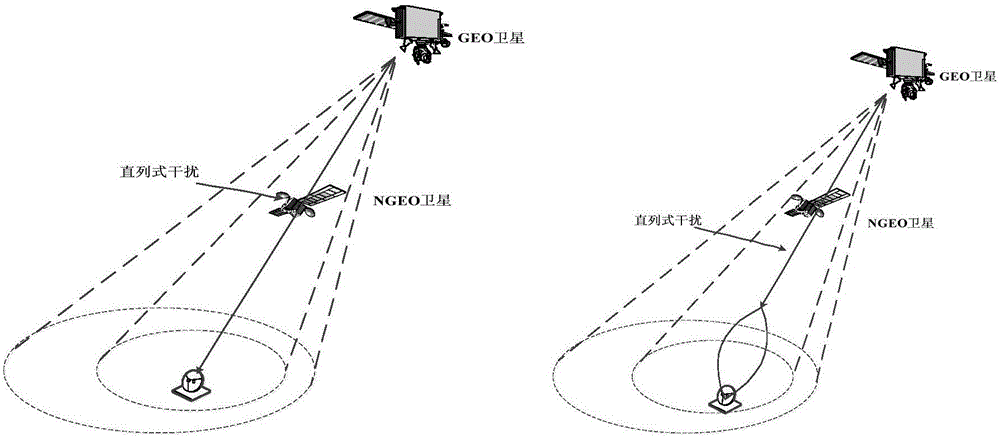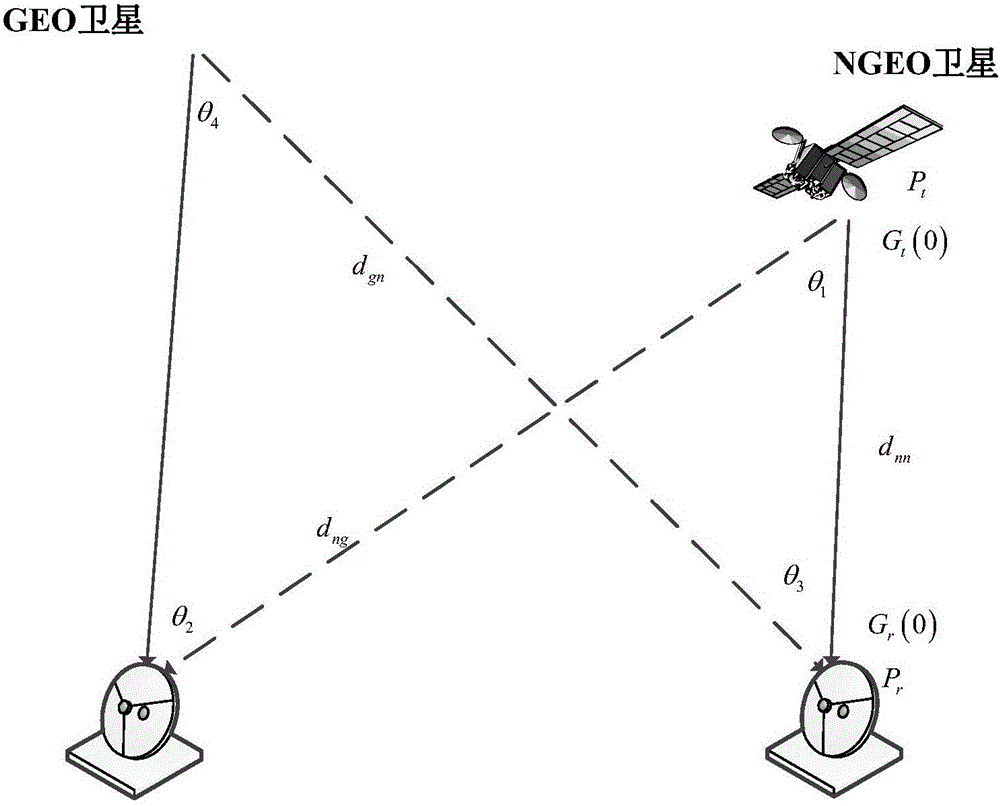Inline interference suppression based geostationary orbit (GEO) and non-geostationary orbit (NGEO) communication satellite spectrum sharing method
A communication satellite and interference suppression technology, which is applied in the field of satellite communication, can solve problems such as the performance impact of the main satellite system and the inability to guarantee the service quality of the NGEO system, and achieve the effects of improving spectrum utilization efficiency, saving energy, and increasing system capacity
- Summary
- Abstract
- Description
- Claims
- Application Information
AI Technical Summary
Problems solved by technology
Method used
Image
Examples
Embodiment Construction
[0044] Step 1: Conduct interference analysis on the GEO and NGEO satellite communication systems using the same frequency band, and determine the communication satellite system in the downlink (satellite sends signals to the ground station) shared frequency scenario and uplink (ground station sends signals to the satellite) shared frequency scenario In-line interference constraints;
[0045] 1.1 Downlink shared frequency scenario analysis:
[0046] Both GEO and NGEO satellites operate in forward mode, as figure 2 As shown, there are two interference links here, as shown by the dotted line: (a) the interference link of NGEO satellite communication to the GEO ground station; (b) the interference link of GEO satellite communication to the NGEO ground station. Considering that GEO satellites are already in orbit and NEGO satellites use the same spectrum to be deployed, the NGEO link budget needs to be adjusted according to the interference of GEO satellites on NGEO links. Here ...
PUM
 Login to View More
Login to View More Abstract
Description
Claims
Application Information
 Login to View More
Login to View More - R&D
- Intellectual Property
- Life Sciences
- Materials
- Tech Scout
- Unparalleled Data Quality
- Higher Quality Content
- 60% Fewer Hallucinations
Browse by: Latest US Patents, China's latest patents, Technical Efficacy Thesaurus, Application Domain, Technology Topic, Popular Technical Reports.
© 2025 PatSnap. All rights reserved.Legal|Privacy policy|Modern Slavery Act Transparency Statement|Sitemap|About US| Contact US: help@patsnap.com



